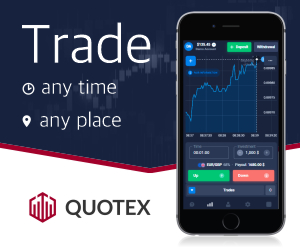The Complete Forex Trading Guide
From Absolute Beginner to Advanced Trader – Everything You Need to Know
Introduction to Forex Trading
The foreign exchange (Forex) market is the largest financial market in the world, with over $6 trillion traded daily. This guide will take you through every step from opening your first account to executing advanced trading strategies.
Why Trade Forex?
- 24/5 market accessibility
- High liquidity (easy to enter/exit trades)
- Low transaction costs compared to other markets
- Opportunity to profit in both rising and falling markets
Step 1: Getting Started
Choosing a Broker
Your broker is your gateway to the markets. Key factors to consider:
- Regulation: FCA, CySEC, ASIC, etc.
- Trading Platform: MT4, MT5, cTrader
- Account Types: Standard, ECN, Micro
- Spreads & Commissions: Compare costs
- Deposit/Withdrawal: Methods and fees
Recommended Brokers
Account Types Explained
| Account Type | Minimum Deposit | Spreads | Commission | Best For |
|---|---|---|---|---|
| Standard | $100-$500 | 1-2 pips | None | Beginners |
| ECN | $500-$1000 | 0.1-0.5 pips | $3-$7 per lot | Scalpers, Professionals |
| Micro | $1-$50 | 1.5-3 pips | None | Practice Accounts |
Deposits & Withdrawals
- Bank Transfer: Secure but slow (2-5 days)
- Credit/Debit Cards: Instant deposits
- E-Wallets: Skrill, Neteller, PayPal
- Crypto: Bitcoin, USDT (fastest option)
Important Warning
Always verify withdrawal policies before depositing. Some brokers require you to withdraw via the same method you deposited.
Step 2: Trading Basics
Understanding Currency Pairs
Forex is traded in pairs (e.g., EUR/USD). The first currency is the base, the second is the quote.
| Pair Type | Examples | Characteristics |
|---|---|---|
| Majors | EUR/USD, GBP/USD | Most liquid, tight spreads |
| Minors | EUR/GBP, AUD/CAD | Lower liquidity, wider spreads |
| Exotics | USD/TRY, EUR/PLN | High volatility, very wide spreads |
Pips and Lots
- Pip: Smallest price movement (0.0001 for most pairs)
- Standard Lot: 100,000 units = $10/pip
- Mini Lot: 10,000 units = $1/pip
- Micro Lot: 1,000 units = $0.10/pip
Leverage and Margin
Leverage allows you to control larger positions with less capital:
- 50:1 leverage means $1 controls $50
- Margin = (Trade Size) / Leverage
- Higher leverage increases both profits and risks
Leverage Warning
Beginners should use no more than 10:1 leverage. Professional traders rarely exceed 30:1.
Step 3: Mastering Trading Sessions
Market Sessions Schedule
| Session | Time (GMT) | Best Pairs | Characteristics |
|---|---|---|---|
| Tokyo | 23:00-08:00 | USD/JPY, AUD/JPY | Slow, range-bound |
| London | 07:00-16:00 | EUR/USD, GBP/USD | Highest volume, best trends |
| New York | 12:00-20:00 | USD pairs | Volatile, news-driven |
London Session Strategies
The London session (07:00-16:00 GMT) offers the best trading opportunities:
- First Hour: Look for breakout trades
- Mid-Session: Trend continuation
- Last Hour: Profit-taking reversals
Professional Tip
The most liquid time is during the London-New York overlap (12:00-16:00 GMT). This is when institutional traders are most active.
Step 4: Advanced Trading Concepts
Order Blocks and Liquidity
Institutional traders leave “footprints” in the market:
- Order Blocks: Areas where big players entered trades
- Liquidity Pools: Zones with high stop-loss concentrations
- Market Structure: Identify swing highs/lows
News Trading Strategies
Trading economic news releases requires precision:
- High-Impact News: NFP, CPI, Central Bank Decisions
- Pre-News: Reduce position size or stay flat
- Post-News: Trade the retracement after initial spike
News Trading Risks
During high-impact news, spreads can widen dramatically and slippage can occur. Use pending orders instead of market orders.
Timeframe Selection
| Timeframe | Best For | Typical Hold Time |
|---|---|---|
| 1M-5M | Scalping | Seconds to minutes |
| 15M-1H | Day Trading | Minutes to hours |
| 4H-Daily | Swing Trading | Hours to days |
| Weekly+ | Position Trading | Weeks to months |
Step 5: Professional Risk Management
The Golden Rules
- Risk only 1-2% of account per trade
- Always use stop-loss orders
- Maintain positive risk-reward (minimum 1:2)
- Keep a trading journal
Position Sizing Formula
Calculate your position size based on your risk:
Position Size = (Account Risk) / (Stop Loss in Pips × Pip Value)
Example:
$5,000 account risking 1% ($50)
Stop loss = 50 pips
Pip value = $1 (mini lot)
Position Size = $50 / (50 × $1) = 1 mini lot
Advanced Risk Technique
Professional traders adjust position size based on volatility. Use ATR (Average True Range) to dynamically size positions.
Recommended Forex Brokers
After testing dozens of brokers, these are our top recommendations for 2023:
Final Thoughts
Becoming a successful Forex trader takes time and discipline. Remember:
- Start with a demo account to practice
- Begin live trading with small positions
- Focus on risk management above all else
- Continuously educate yourself and adapt
Professional Mindset
The markets will always be there. Your goal isn’t to get rich quick, but to survive long enough to let compounding work in your favor.




